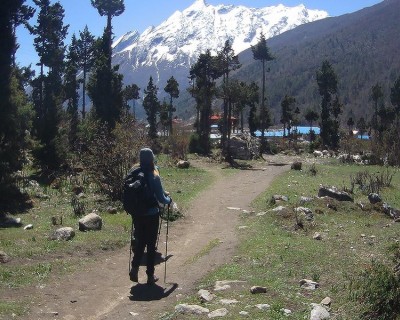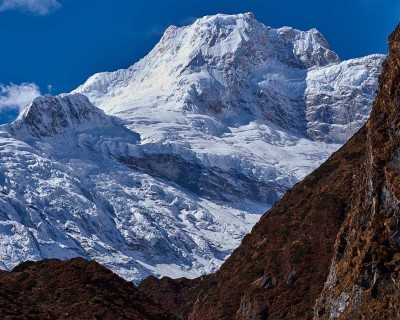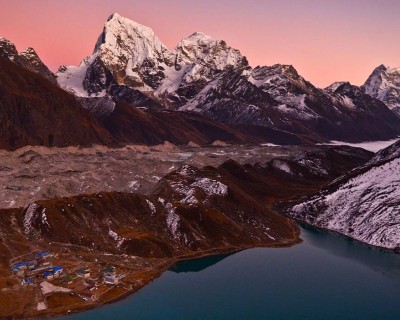November Weather in Langtang
If you want to explain the weather of Lantang Valley in November in one line, it would be: ‘Cold, clear and consistent’. That eventually means one of the best times for trekking.
How does the weather impact the trekking experience? The following points explain in detail:
Is it cold in November in Langtang?
Yes, it does get cold during November, especially at higher elevations. Nonetheless, the November chill is manageable if you are properly equipped for the trek.
In the lower sections of the trail, from Syabrubesi to Lama Hotel, the daytime temperatures hover between 10°C and 15°C. They dip to around 2°C to 5°C at night.
As you ascend to Lantang Village, you will face colder mornings and evenings. Nighttime temperature here can fall between -2°C and -5°C, while daytime stays in the range of 5°C and 10°C.
The coldest part of the trek begins from Kyanjin Gompa. During the day, the temperatures can range between 3°C and 8°C. But nights often plunge between -5°C and -10°C.
Trekkers need to arrange for warm clothing, especially for early mornings and evenings. You should carry layered clothes to brave the cold of November.
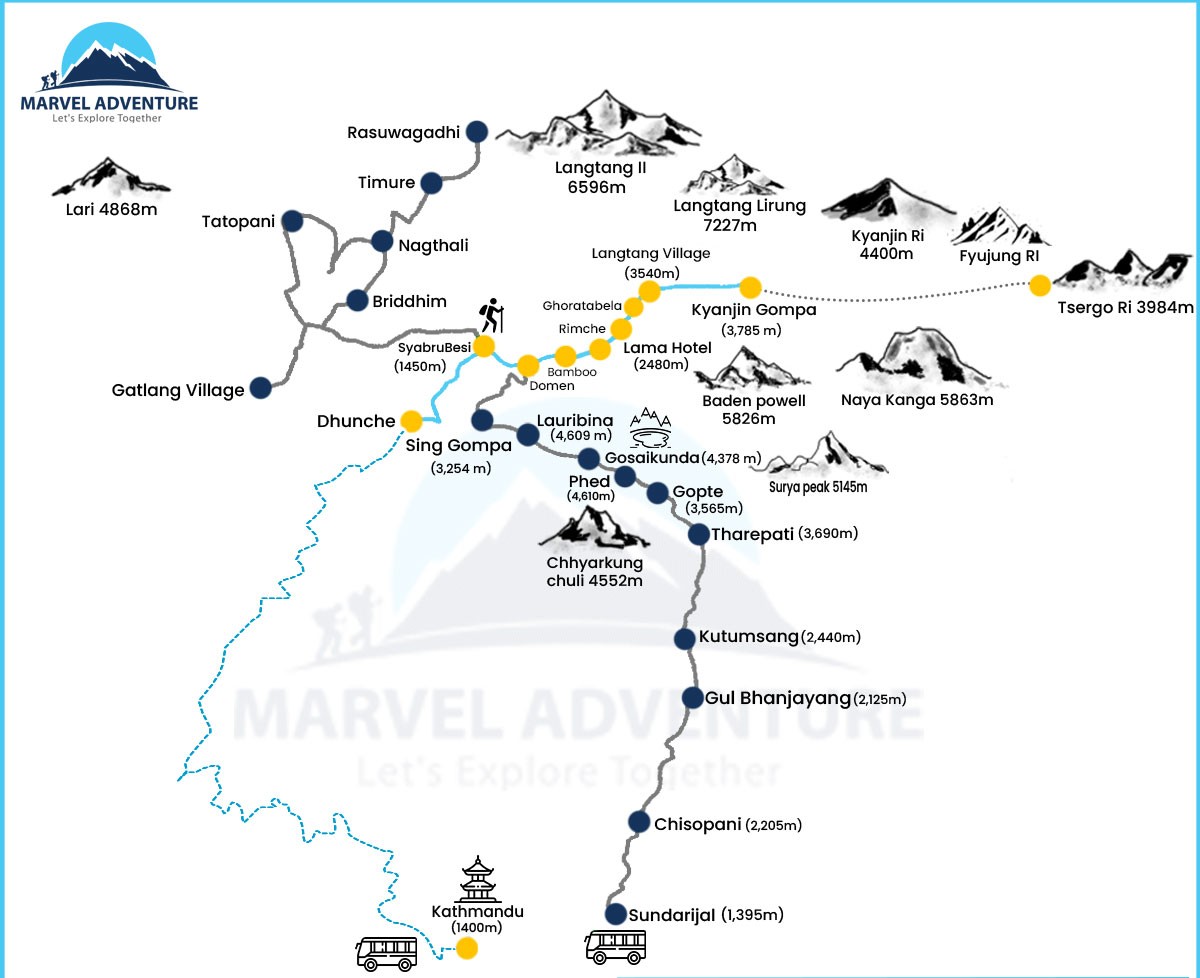
What is the precipitation like?
November is the driest month in the Langtang region. There is a low chance of rain and snow in November, making the trails dry in the Langtang region. As such, the trails are easy to walk.
But there might be light snow at higher elevations after mid-November. Lantang generally does not see sudden snowfalls in this month. Yet, it is still possible at higher elevations. Therefore, it is a good idea to check the local weather forecast before setting off for the trek.
Is the November sky clear in Langtang?
As November is the second month after the end of the monsoon, the rain has washed away dirt and haze from the air. It makes the skies clearer and offers excellent visibility. Thus, the views of mountains like Langtang Lirung, along with its surrounding peaks, are clear.
The November mornings are also known for low humidity and clean air. They make ideal conditions for photography.
How strong are the winds at higher elevations in Langtang?
The winds in the Langtang trek route during November are manageable and do not obstruct your trek. The wind is light to moderate in the mornings in most parts of the trek trail. Stronger winds can be expected at higher elevations of the route, like in Kyanjin Ri and Tserko Ri. But you can avoid the worst experience by starting the trek early. That is because the winds tend to get stronger in the afternoon.
However, you might be affected by wind chill, mainly at viewpoints and exposed ridgelines. You should prepare for this and overall wind impacts by wearing layered clothing.
Are the November daylight hours sufficient for trekking?
You can expect around 10 to 11 hours of daylight in November as the sun rises late and the trekking sets early in November. The beginning of the month has slightly longer daylight hours than towards the end.
Nonetheless, this is a shorter duration for trekking. Therefore, start early each day to avoid trekking in the dark. Also, do not forget to carry a headlamp or torchlight in case of delays or longer hiking days.
What challenges should trekkers expect in November?
Expect the unexpected while trekking in Langtang in November. Generally, the weather is stable in November. Yet, sometimes there is a quick drop in temperatures. This sudden change in weather occurs mostly in late November.
Clouds can build up by afternoon, leading to poor visibility and sudden weather changes in higher elevations.
Also, there can be light and brief snowfalls without warning. Though not dangerous, they can reduce visibility along with indicating sudden weather changes.
Some of the solutions to dealing with these challenges are: clothing with extra insulation, waterproof gear and a winter-rated sleeping bag.
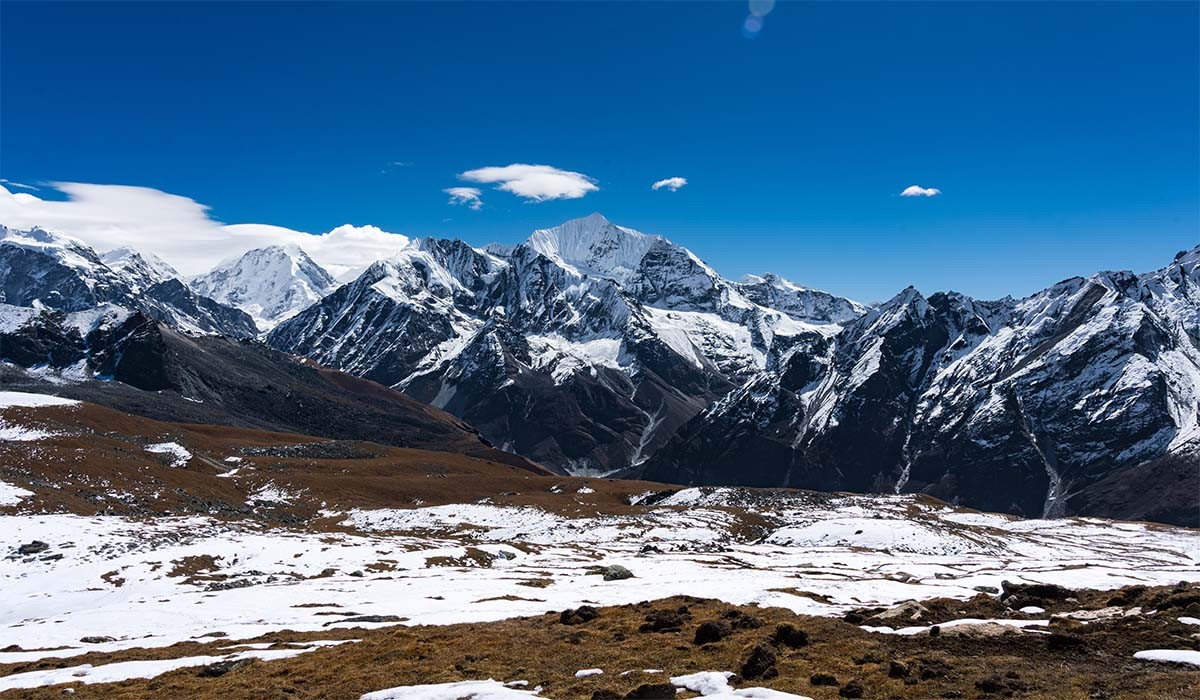
Trail Atmosphere in November
The Langtang trekking trails in November transform into a visual spectacle of natural beauty. On the other hand, the trails see fewer crowds, and this allows for a peaceful trip. The trail atmosphere can be called quieter yet vibrant thanks to the autumn colors.
Golden hues of autumn
The vegetation in the trekking trail shows its full autumn color in November. The lower valleys feature deciduous trees like oaks and maples that are in golden colors. You can experience this especially in the trails between Saybrubesi and Ghoda Tabela. The upper part of the trek features snow-dusted peaks. The contrast between these two areas is not only visually stunning but also makes a good backdrop for photographs.
Fresh mountain air
You can breathe in fresh air that is free of dust on the trekking trail of Langtang Valley. That is because the monsoon rain has washed away the pollutants. As a result, the breathing is comfortable and the visibility is good.
Add to that the presence of cold and dry air that makes the trek easier as compared to warmer and humid months.
Quiet and peaceful trails
The arrival of November means the fading of the peak trek season in Nepal. That is why November sees fewer crowds than October in Nepal’s trekking trails. This is evident mostly in the second half of the month.
Therefore, if you are in Langtang in November, you will find quieter trails that allow for a meditative and immersive trekking experience.
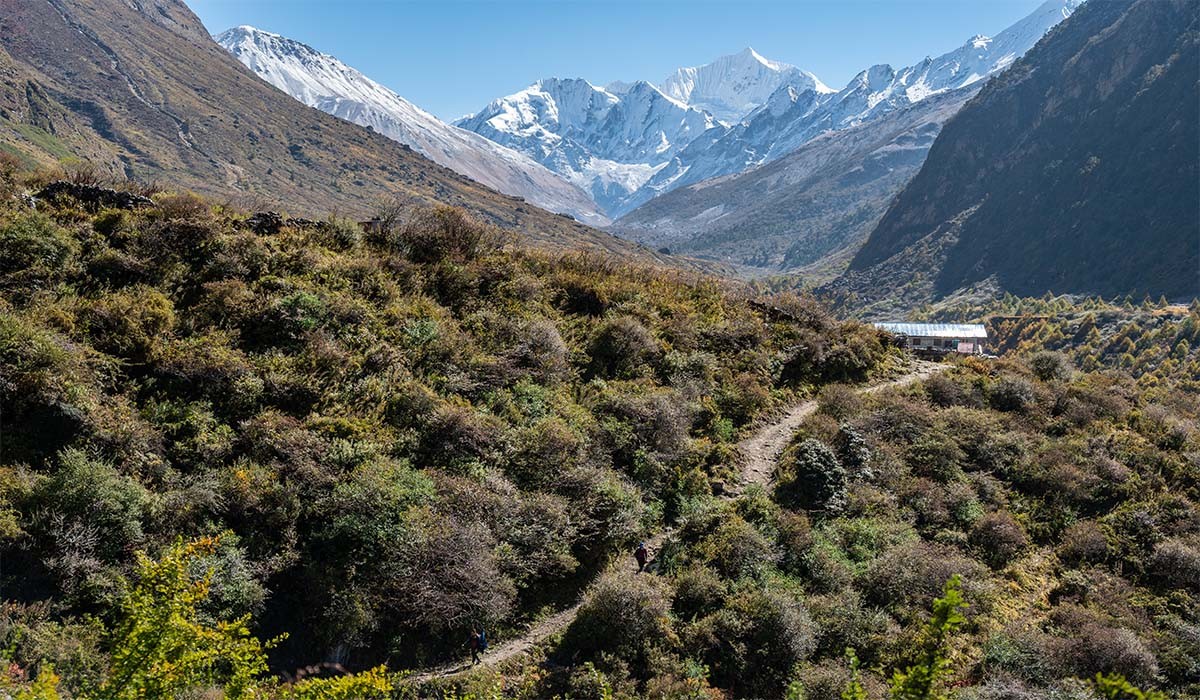
Accommodation Availability
November may see fewer crowds, but it is still the main trekking season in Nepal. Therefore, all teahouses along the Langtang trekking trail are open and functioning in this month. As a result, you can find reliable accommodation and food services throughout the month. Yet some teahouses in higher elevations may close due to falling temperatures.
Also, with fewer trekkers on the trail, you have more choices for a room. That is to say, you can choose one with better insulation or the one in a good location.
To deal with the November cold, the teahouses offer thick wool blankets. Sometimes you may get extra covers, too, to help combat the cold nights.
The dining areas are heated and thus, you can enjoy warm socialization in communal space during the evenings. Likewise, the hot and nutritious meals help you stay warm and energetic throughout the trek.
November Packing List
If you are opting for the Langtang trek in November, then your list for items to pack should focus on gear that ensures comfort and safety in harsh alpine conditions.
Along with packing all the essentials for a trek, here are a few things that you should not miss to carry when trekking to Langtang in November. This list focuses on the November requirements:
Warmth and insulation
- Invest in a high-quality down jacket for keeping warm during early mornings, evenings and high altitudes like Kyanjin Gompa.
- Arrange a sleeping bag that is rated for -10°C or lower for a good sleep at higher elevations.
- Pack thermal base layers to retain body heat and wick away sweat.
Protection from cold
- Carry a pair of insulated gloves to protect your hands during cold, early starts and windy afternoons.
- A warm hat or beanie retains body heat and keeps your head warm in the cold weather.
- Multiple layers of wool and thermal socks are essential to keep feet warm and dry.
Wind and weather protection
- Bring along a windproof and waterproof jacket to protect yourself from cold winds and snow flurries.
- Windproof and water-resistant pants are essential to stay warm at high altitudes.
Trek safety and comfort
- Cary microspikes to navigate frosty or slippery November trails.
- Carry a thermos flask to keep your tea and water warm during cold trekking hours.
- Headlamps are useful whenever you start the trek early, while it is still dark outside.
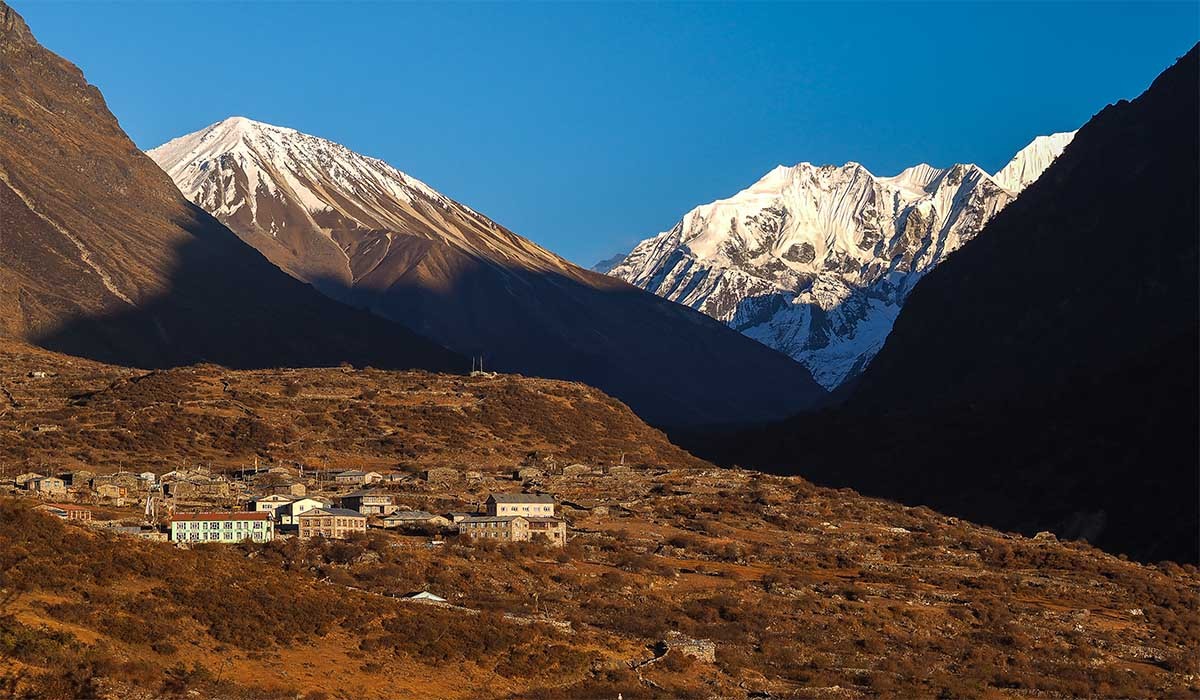
Tips for a Smooth Langtang Trek in November
If you think the cold weather of November and shorter days can make the Langtang trek challenging, then you are right. But this should not stop you from exploring the region in November.
If you prepare for the journey smartly, then your November Langtang trek will go smoothly. Read on to know useful tips to make the most of your Langtang trek in November.
Start your trek early
November days are shorter as the sun rises late and sets early. As a result, this reduces the daylight hours and it can directly affect your day’s walk. You might need to rush on the trek trail if you want to reach the next teahouse before it gets dark. But if you want a relaxed pace, then begin your trek early every morning. As a result, you will have enough time to trek to arrive at the day’s destination.
Stay hydrated
You might not feel thirsty during the trek as the weather is cold in November. As such, you do not remember to drink water regularly. This can lead to dehydration, potentially affecting your trek.
But do not let this weather condition mask dehydration. Drink plenty even if you do not feel thirsty. Carry a thermos with hot tea or water or even soup on colder trails.
Differentiate early and late November
You should be aware of the difference between early and late November and plan your Langtang trek accordingly.
Early November is ideal even for side hikes to Kyanjin Ri and Tserko Ri as the weather is drier and warmer during this time. But you might need to avoid these places in late November due to the colder weather. You should also be ready to wear more layers and face icy sections along the trail in the later part of the month.
Opt for a flexible itinerary
Make sure there is a buffer day or two in your itinerary to accommodate delays or detours. That is bound to happen in November, as the month is known for unexpected cold snaps and light snow at higher altitudes.
The flexible itinerary gives you a chance to relax if you are slowed down by such conditions.
Keep an eye on weather forecasts
The latter half of November shows signs of the arrival of winter. As such, it always helps if you keep track of the weather conditions while on the trail. For that, check local weather updates daily. You can do so via Wi-Fi wherever they are available.
Choose accommodation with better insulation
Some teahouses offer better insulation compared to others. Or they have better access to the heating system in communal spaces. You should confirm in advance whether your place of stay has a heating facility available or not. This should be done so that you have a comfortable stay at high altitudes.
Keep your electronics warm
Cold weather can drain your battery power faster than usual. So, do not leave your phone, camera or other electronic devices out in the open. Instead, store them inside your sleeping bag at night. During the day, put them in your inner pocket to prolong battery life.
.jpg)
Lantang in November: Weighing the pros and cons
November Langtang trek comes with a few challenges but they can’t deter a trekker who is well-prepared for it.
The most noticeable difficulty is the cold weather of November. It is especially so at night, during early mornings, and in higher altitudes. Shorter daylight hours also pose a challenge in completing your walks.
Despite these difficulties, Lantang is still a perfect destination for trekkers in November. The first reason is that one does not need to cross high-altitude passes in this trek. This reduces the chance of snow blocking the trail. The trek route remains accessible until late November.
The other advantage is the safety and accessibility that this trek route offers. As the Langtang region is closer to Kathmandu, it is easier to make an evacuation as well as changes to plans.
Meanwhile, the fewer trekkers on the route in November makes the trek a peaceful journey. The overall experience is further enhanced by stable and moderate weather, clear skies, and fresh air.
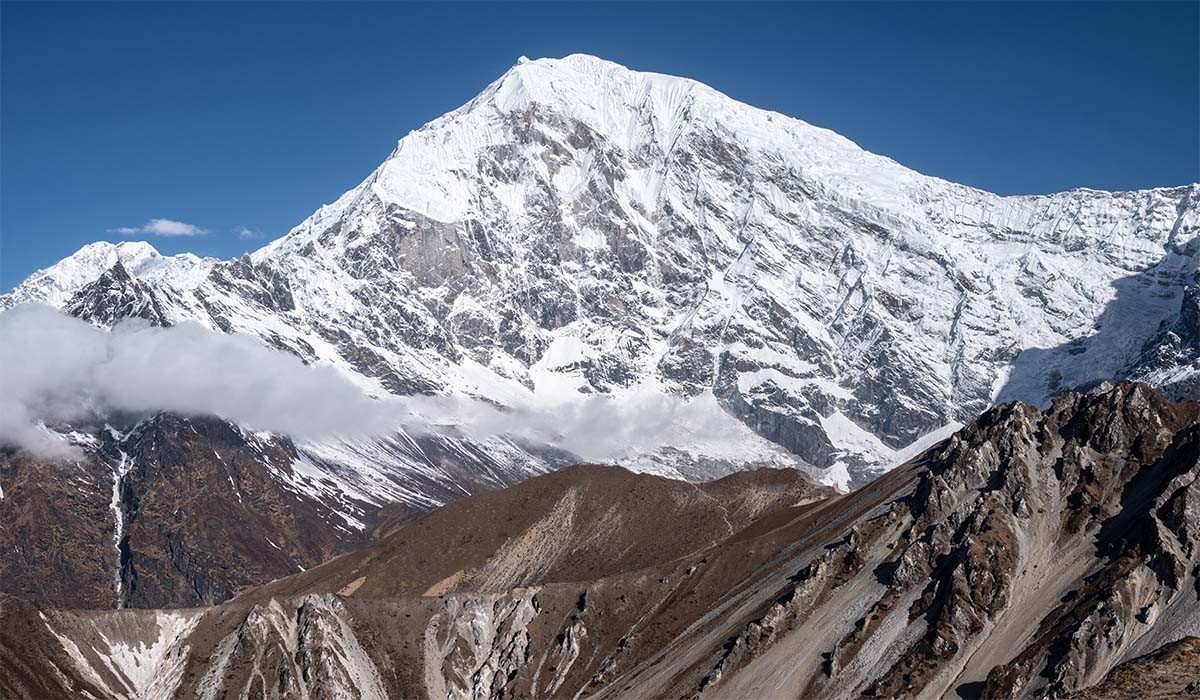
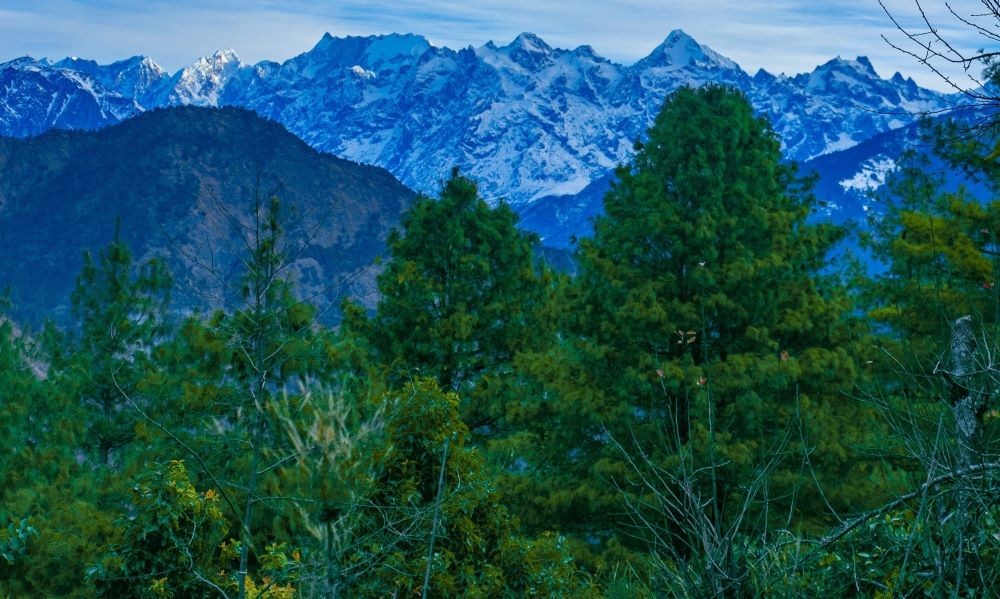






.jpg)
